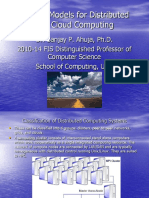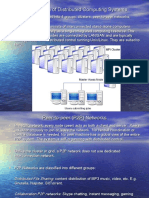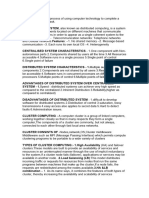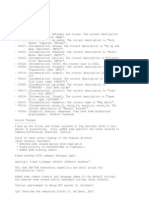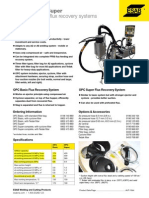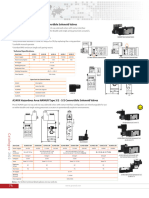0% found this document useful (0 votes)
9 views12 pagesDiscuss in Detail About Distributed System Models
Distributed system models are essential for modern computing, detailing how multiple autonomous computers collaborate to provide services. Key models include centralized computing, cluster computing, grid computing, peer-to-peer networks, and cloud computing, each with distinct characteristics and use cases. Additionally, virtualization techniques such as full and para-virtualization enhance resource utilization and scalability in cloud environments.
Uploaded by
ohjaanu025Copyright
© © All Rights Reserved
We take content rights seriously. If you suspect this is your content, claim it here.
Available Formats
Download as PDF, TXT or read online on Scribd
0% found this document useful (0 votes)
9 views12 pagesDiscuss in Detail About Distributed System Models
Distributed system models are essential for modern computing, detailing how multiple autonomous computers collaborate to provide services. Key models include centralized computing, cluster computing, grid computing, peer-to-peer networks, and cloud computing, each with distinct characteristics and use cases. Additionally, virtualization techniques such as full and para-virtualization enhance resource utilization and scalability in cloud environments.
Uploaded by
ohjaanu025Copyright
© © All Rights Reserved
We take content rights seriously. If you suspect this is your content, claim it here.
Available Formats
Download as PDF, TXT or read online on Scribd
/ 12

